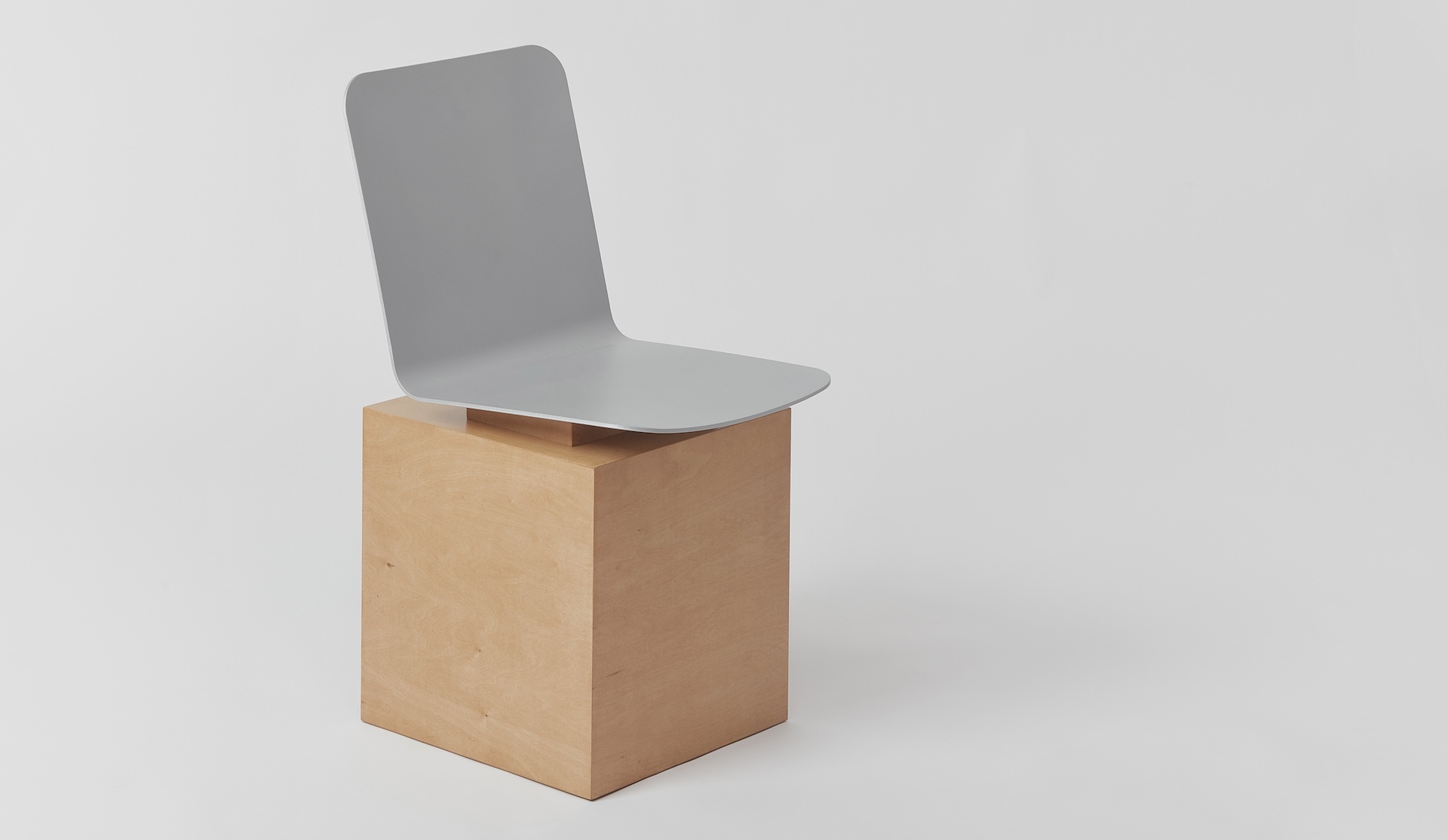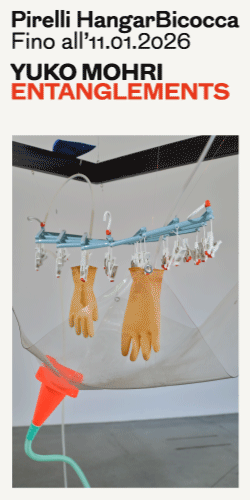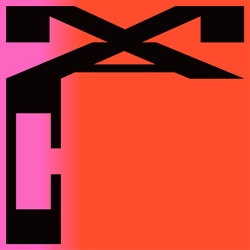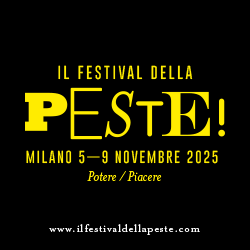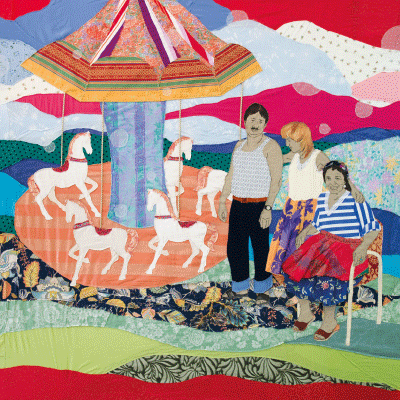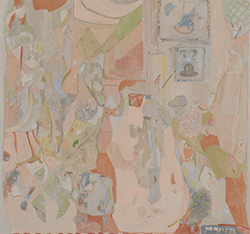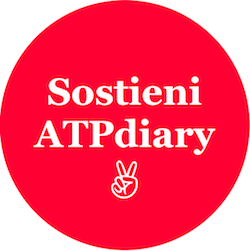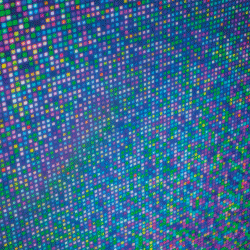English version below —
Conversazioni con i Designer di Oggi
“Storie di designer” è una rubrica di interviste nata con l’obiettivo di dare spazio e visibilità ai giovani talenti del mondo del design. In un’epoca in cui la creatività si intreccia con le nuove tecnologie e le sfide globali, i giovani designer sono protagonisti di un cambiamento culturale e visivo che merita di essere raccontato. Attraverso queste interviste vogliamo esplorare le storie, le ispirazioni e le visioni di chi sta plasmando il futuro del design. Ogni intervista è un viaggio nel percorso formativo e professionale di questi creativi, scoprendo le influenze, i progetti e le sfide che hanno affrontato lungo il loro cammino.
—
Max Enrich è un designer di Barcellona che esplora i limiti tra funzionalità e pura estetica. Attraverso la selezione e l’uso dei materiali, insieme a un accurato lavoro sulla forma, la luce e il colore, le sue creazioni sfidano le aspettative del design industriale. Con un approccio sperimentale e una marcata sensibilità per la composizione, le sue opere invitano alla provocazione e all’interazione. In questa intervista esploriamo il suo processo creativo, la sua visione del design e come si è messo alla prova nel corso della sua carriera.
Sara Benaglia e Javier Sisqués: Il tuo lavoro è molto vario, ma è sempre caratterizzato da un linguaggio visivo ben definito, che si tratti di linee pulite e geometriche o della forte presenza scultorea delle tue creazioni. Per addentrarci meglio nel tuo universo creativo, come descriveresti la tua identità estetica e con quali elementi vuoi essere riconosciuto? Questa prospettiva è cambiata nel tempo?
Max Enrich: È difficile autodefinirmi, perché lo stile che ho sviluppato in questi anni è stato un processo del tutto spontaneo. Lavoro su ogni pezzo singolarmente, e questi si aggiungono alla lista dei progetti completati. È solo guardando indietro che mi rendo conto di una certa coerenza o di uno stile che accomuna il mio lavoro.
SB + JS: Quando inizi a progettare, hai una filosofia o un principio imprescindibile? C’è qualcosa che deve sempre essere presente nel tuo processo creativo o negli oggetti che realizzi?
ME: Il “processo creativo” è tutto tranne che un vero processo: a volte le idee si inseguono, altre volte appaiono dal nulla, non esiste un ordine preciso o un manuale da seguire. Se dovessi definire un principio, direi che cerco sempre di aggiungere un pizzico di ingegno o ironia. Gioco con i pesi, gli equilibri, i contrasti, ecc.
SB + JS: In interviste precedenti hai raccontato che da bambino volevi diventare un inventore. Ora che hai una carriera consolidata nel design, come è evoluta quella visione? Cosa penserebbe il “piccolo Max” del lavoro che fai oggi?
ME: Non so se un giorno arriverò mai al livello di inventore che volevo essere e che, in fondo, voglio ancora essere. Ammiro i progetti più complessi e sento che è come una carota appesa a un bastone davanti ai miei occhi: qualcosa di irraggiungibile, ma che mi spinge sempre avanti. Osservo e imparo da meccanismi elaborati che poi semplifico nei miei progetti. Trovo ispirazione nei satelliti, nei motori e nelle invenzioni, anche se non capisco nemmeno come funzioni il magnetismo, l’elettricità o la chimica.


SB + JS: Sul tuo Instagram, specialmente nei BTS, vediamo come gran parte della tua produzione prenda vita grazie alla collaborazione con laboratori e artigiani. Come è stato il processo di costruzione di queste relazioni? Hai incontrato difficoltà? Per molti designer emergenti, questo è uno degli ostacoli più grandi.
ME: Ho avuto la fortuna di trovare questo modo di lavorare. Molti progetti non vanno avanti per mancanza di empatia da parte di un fornitore. Imparare come lavora un artigiano amplia le mie capacità di progettazione. Entrare in un nuovo laboratorio è un po’ come entrare in un negozio di caramelle a 12 anni.
SB + JS: Nel tuo percorso emerge anche un certo pattern nell’uso dei materiali. Lavori con quelli che chiami “materiali reali”, ma c’è qualche materiale che non hai ancora esplorato e che ti piacerebbe incorporare nei tuoi futuri progetti? E al contrario, esiste un materiale “proibito”?
ME: Mi piace lavorare con l’essenziale e ci sono ancora processi che non ho mai sperimentato, o che nemmeno so che esistano: ho ancora molto spazio per giocare!
SB + JS: C’è stato un progetto che ti ha dato più problemi del previsto? Se sì, cosa hai imparato da quell’esperienza? Ha influenzato il modo in cui affronti i tuoi lavori attuali?
ME: Le grandi produzioni riservano sempre sorprese. Spesso è una questione di tempistiche e bisogna ingegnarsi o improvvisare. Quando porti a termine un progetto grande, poi ti senti molto più agile quando affronti uno più piccolo. Con il tempo impari a capire dove puoi permetterti di perdere tempo e dove no.
SB + JS: Ci piacerebbe rivolgerci anche ai nuovi designer. Anche tu sei stato in quella posizione, in cui sorgono così tanti dubbi e incertezze: l’identità estetica, i contatti, come farsi conoscere, la sindrome dell’impostore… Tenendo conto di tutto questo, quale messaggio o consiglio vorresti dare a chi sta iniziando il proprio percorso nel design?
ME: Restando sul tema della perdita di tempo, ho sempre pensato che molti designer, soprattutto quelli alle prime armi, perdano tempo cercando di migliorare troppo un prodotto nella fase di ideazione e sketch. Considerando che quasi sempre l’idea che funziona è la prima che viene in mente, servirebbe qualcuno dietro di noi a darci una spinta quando ci blocchiamo davanti a un progetto. Una volta che ti lanci e vai avanti con un prototipo, poi ti giri indietro e pensi… perché non l’ho fatto prima? Lo vedo nei miei studenti: chi sente la pressione sociale o ha paura della critica, ha vita dura. Questo è un mestiere in cui si è costantemente esposti e bisogna imparare ad apprezzarlo. Il design non è solo avere idee e divertirsi, bisogna anche saperle vendere!
SB + JS: Per concludere, questa intervista ci ha permesso di conoscere meglio te e il tuo lavoro, ma guardando al futuro, quali aspirazioni o piani hai in mente? C’è un progetto in fase di sviluppo che ti entusiasma particolarmente e che puoi condividere con noi?
ME: Una cosa che mi piacerebbe vedere presto sul mercato è una mia lampada. È difficile trovare un’idea che si adatti a un brand, ma non perdo la speranza. E per quanto riguarda gli spazi, sto progettando un negozio di calzature e mi sto davvero divertendo nel processo. È sempre stato uno dei progetti che sognavo di realizzare, e finalmente ne ho l’opportunità. Vedremo come andrà a finire!
Cover: Max Enrich – Peana – foto Josep Vila Capdevila

Design Stories | Interview with Max Enrich
Max Enrich is a designer from Barcelona who explores the boundaries between functionality and pure aesthetics. Through the selection and use of materials, along with careful work on form, light, and color, his creations challenge the expectations of industrial design. With an experimental approach and a marked sensitivity to composition, his pieces invite provocation and interaction. In this interview, we explore his creative process, his vision of design, and how he has tested himself throughout his career.
Sara Benaglia e Javier Sisqués: Even though your work is quite varied, it is characterized by a strong visual language, whether through clean, geometric lines or the sculptural presence of your pieces. To dive deeper into your creative universe, how would you describe your aesthetic identity and what elements do you use to make yourself recognizable? Has this perspective changed over time?
Max Enrich: It’s difficult to define myself, as the style I have developed over the years has been something involuntary or natural. I work on pieces separately, and they get added to the list of completed projects. It is only when I look back that I notice a certain coherence or style that unifies my projects.
SB + JS: When you sit down to design, do you have any philosophy or non-negotiable principle? Is there something that must always be present in your creative process or in the objects you produce?
ME: The ‘creative process’ is anything but a process: ideas are sometimes pursued and sometimes appear on their own, there is no set order or instruction manual. As for principles, I would say something I try to incorporate in my work is a touch of ingenuity or irony. I play with weight, balance, contrast, etc.
SB + JS: In previous interviews, you mentioned that as a child you wanted to be an inventor. Now, with a consolidated career in design, how has that vision evolved? What do you think “young Max” would say about what you do now?
ME: I don’t know if I will ever reach the level of an inventor that I once wanted to be—and still want to be. I envy more complex projects and feel like it’s a carrot dangling in front of me, something unattainable that keeps me moving forward. I study and learn from elaborate mechanisms, which I then simplify in my projects. I find inspiration in satellites, motors, and inventions, even though I don’t understand how magnetism, electricity, or chemistry work.
SB + JS: On your Instagram, especially in the BTS, we see how a large part of your production comes to life thanks to collaborations with workshops and artisans. How was the process of building these relationships? Have you encountered any difficulties? For many emerging designers, this is one of the biggest challenges.
ME: I’ve been lucky to find this way of working. Many projects fail due to a lack of empathy from a supplier. Learning how an artisan works expands my ability to design. Entering a new workshop is the closest thing to walking into a candy store at 12 years old.


SB + JS: Throughout your career, we can also see a pattern in your use of materials. You work with what you call “real materials,” but is there any material you haven’t yet explored that you would like to incorporate into future projects? And on the other hand, is there any “forbidden” material?
ME: I like working with the basics, and there are still processes I’ve never experimented with or don’t even know exist—I have plenty of room to play!
SB + JS: Has there been any project that gave you more headaches than expected? If so, what did you learn from that experience? Has it influenced how you approach your current designs?
ME: Large productions always come with surprises. It’s usually a matter of time, and you have to be resourceful or improvise on the go. Once you complete a big project, you feel more confident when returning to a smaller one. Over time, you learn where you can afford to waste time and where you cannot.
SB + JS: We’d also like to address new designers. You’ve been in that position, where so many doubts and uncertainties arise: about aesthetic identity, networking, self-promotion, and imposter syndrome… Taking this into account, what message or piece of advice would you give to those starting their journey in design?
ME: Continuing on the topic of wasted time, I’ve always thought that many designers, especially beginners, waste time trying to improve a product in the ideation and sketching phase. Considering that almost always the idea that works is the first one that comes to mind, we all need someone behind us to give us a push when we get stuck on a project. Once you dive in and move forward with a prototype, you always turn around and think… why didn’t I do this sooner?
I see it in my students: those who feel social pressure or fear criticism have a hard time. It’s a profession where you are very exposed, and you have to find enjoyment in that as well. Designing is not just about having ideas and having fun—you have to get out there and sell!
SB + JS: To conclude, this interview has allowed us to get to know you and your work better, but looking to the future, what aspirations or plans do you have in mind? Is there any ongoing project that particularly excites you and that you can share with us?
ME: Something I’d love to have on the market soon is a lamp. It’s difficult to come up with an idea that fits a brand, but I haven’t lost hope. And in terms of spaces, I’m designing a shoe store, and I’m really enjoying the process. It’s something that had always been on my dream project list, and I finally have the opportunity. We’ll see how it turns out!


